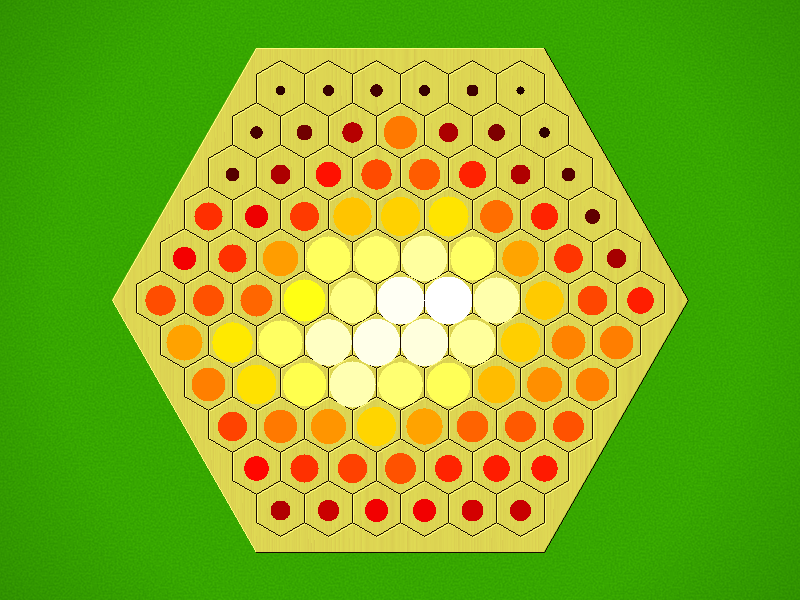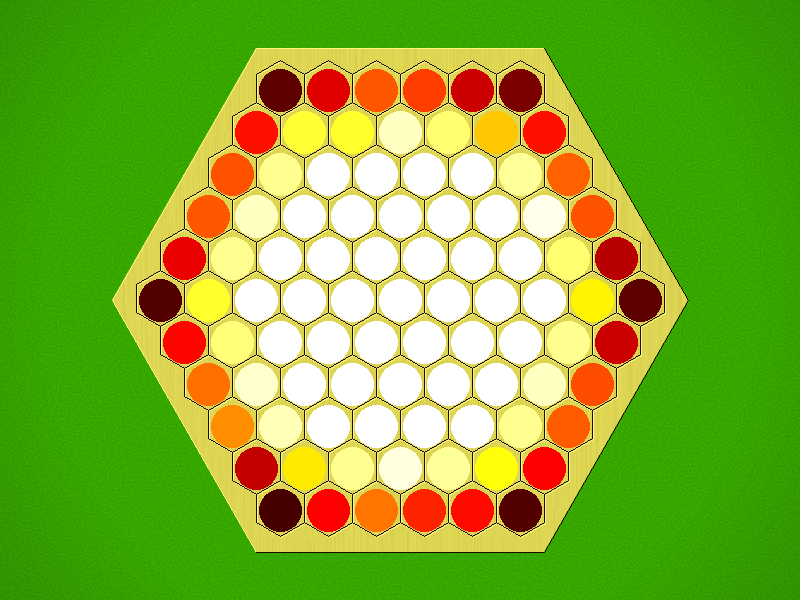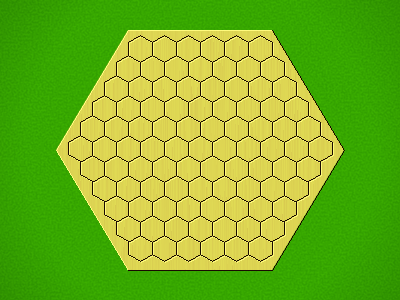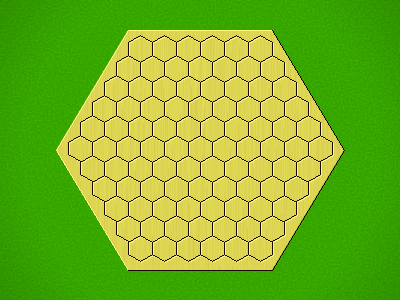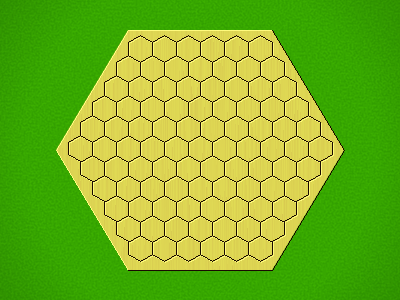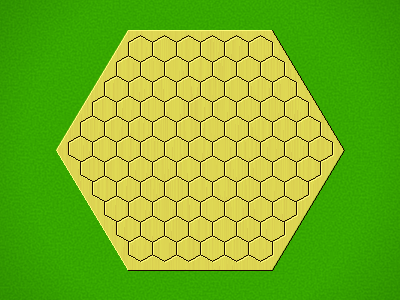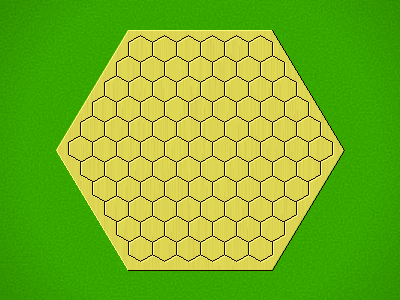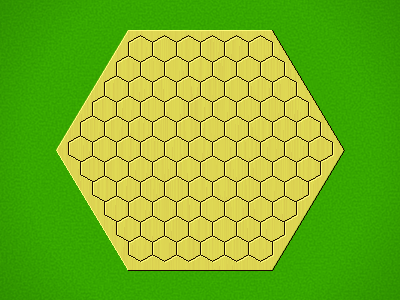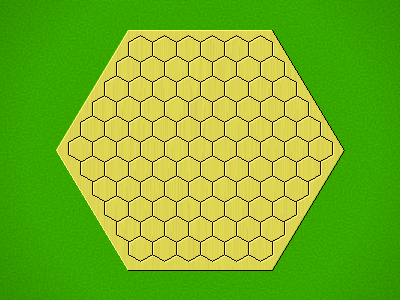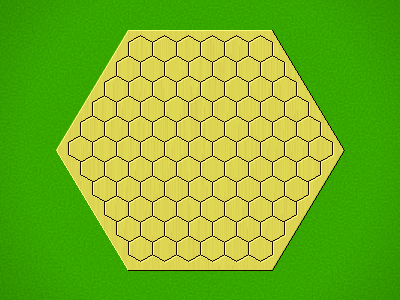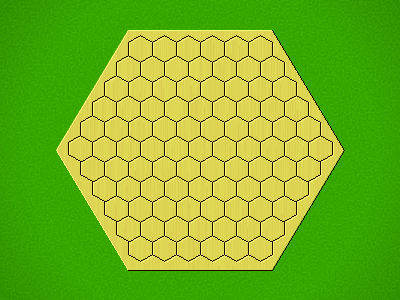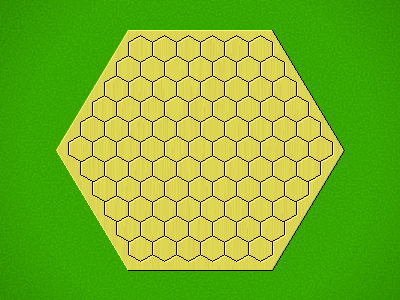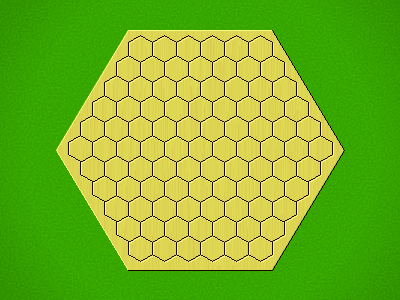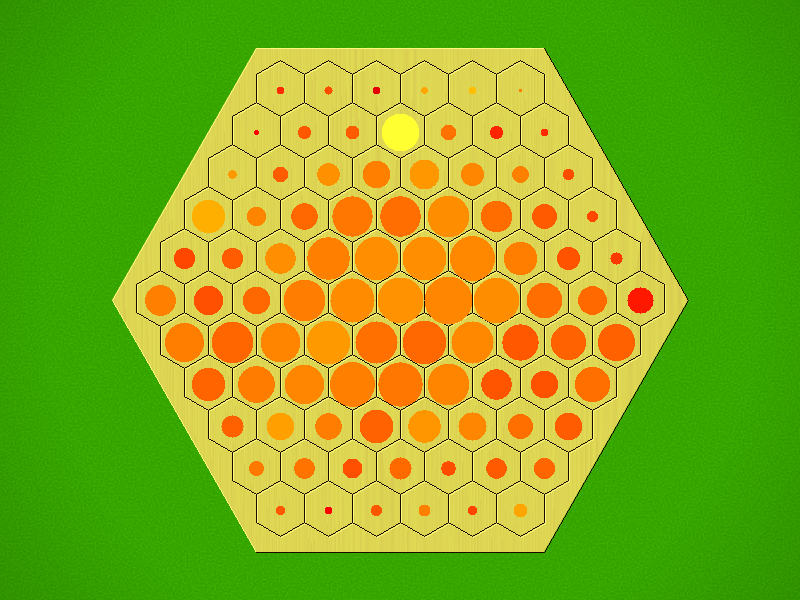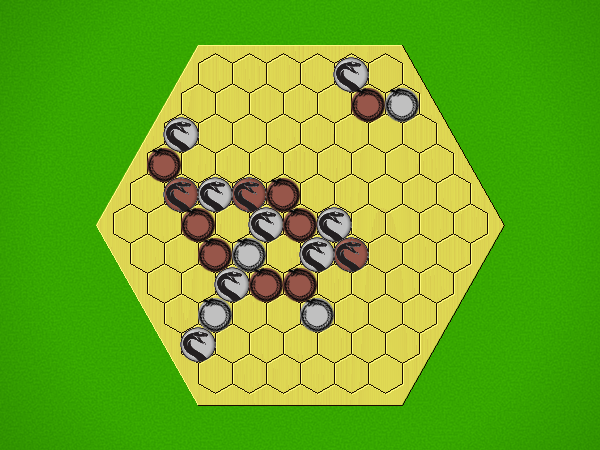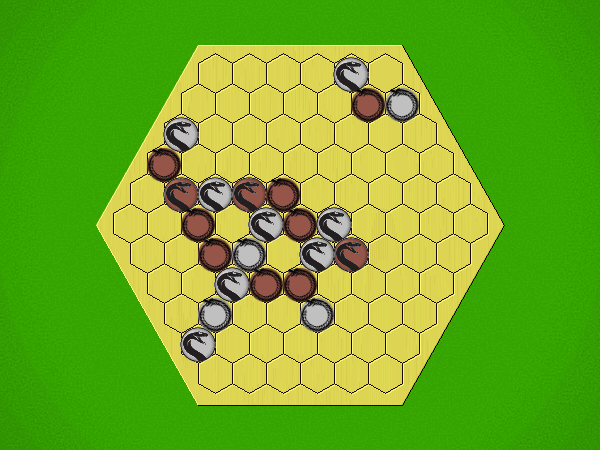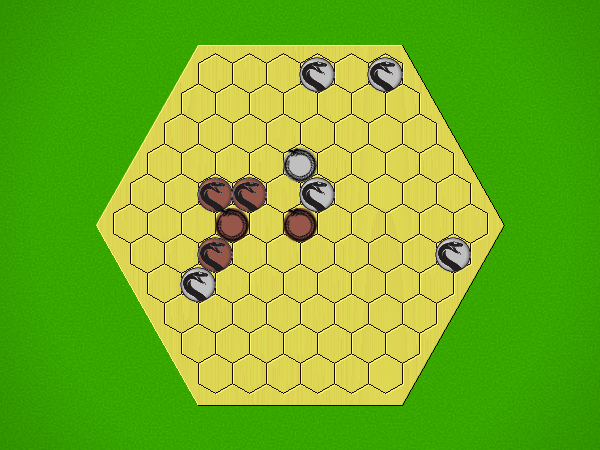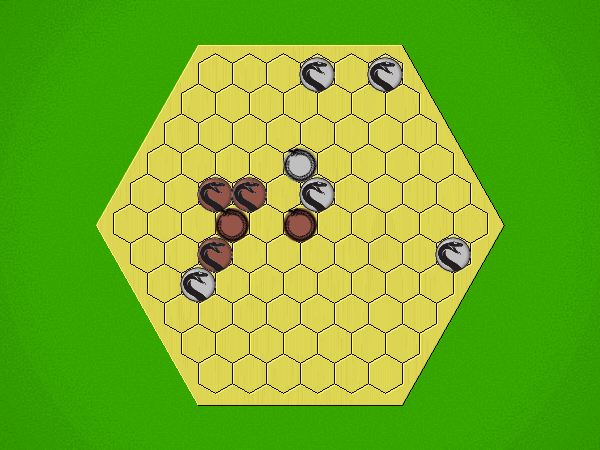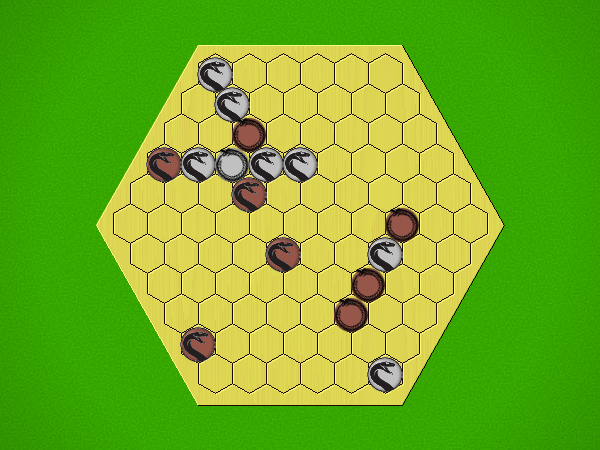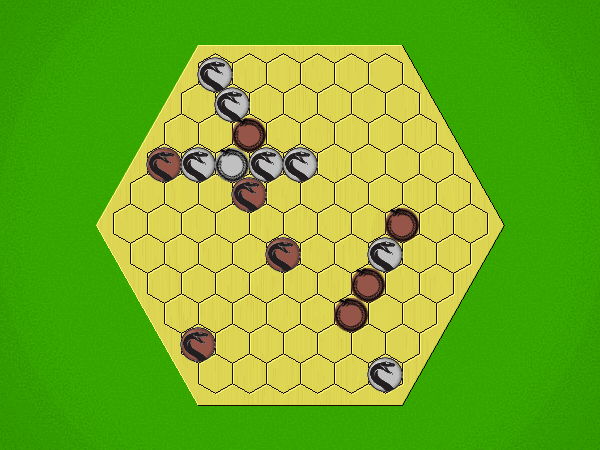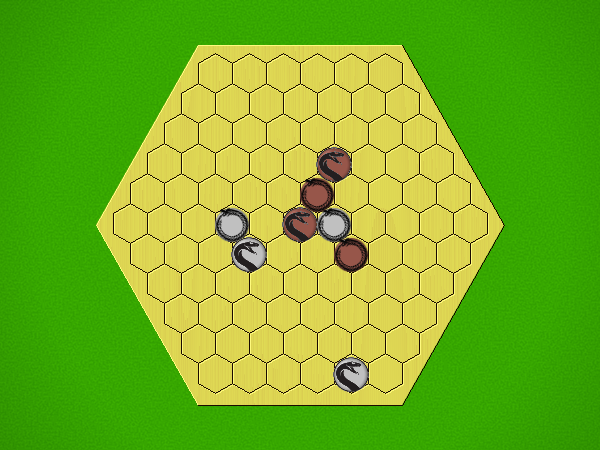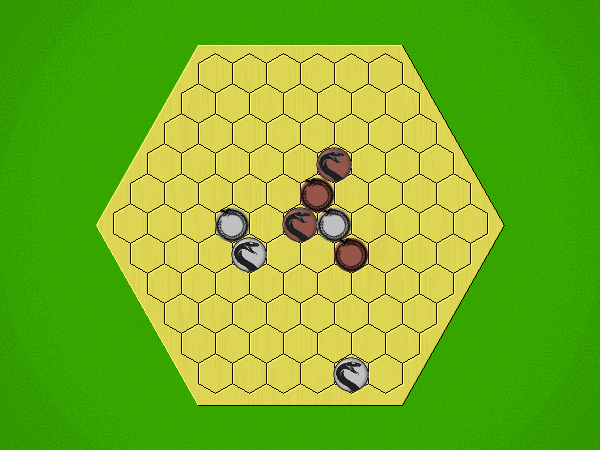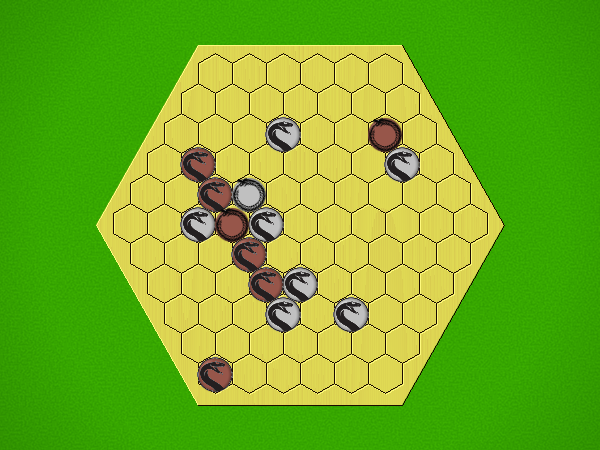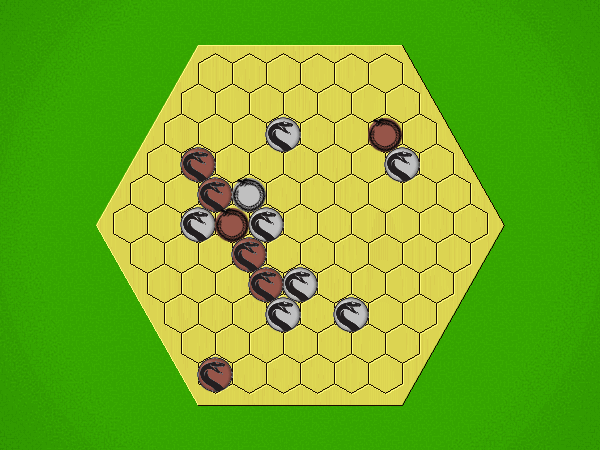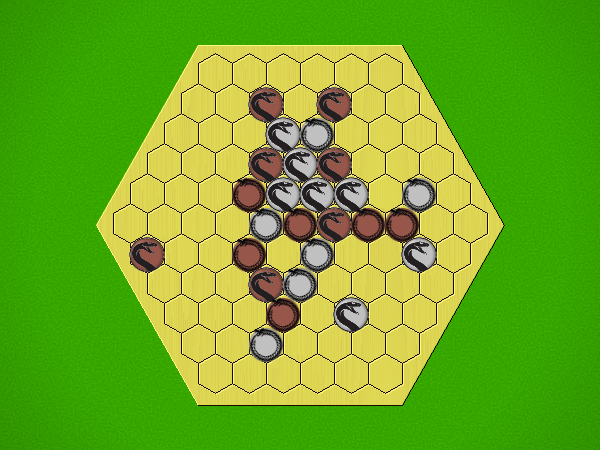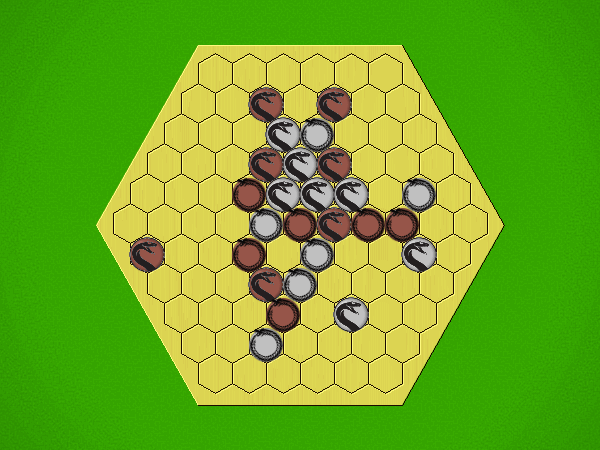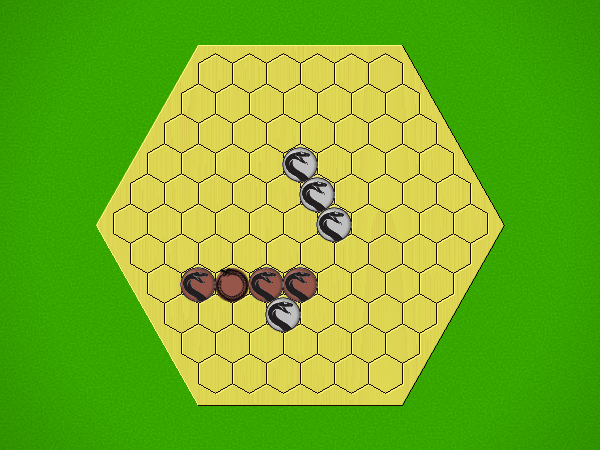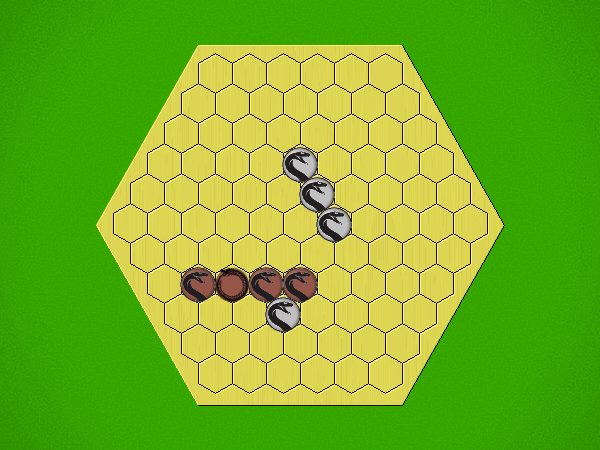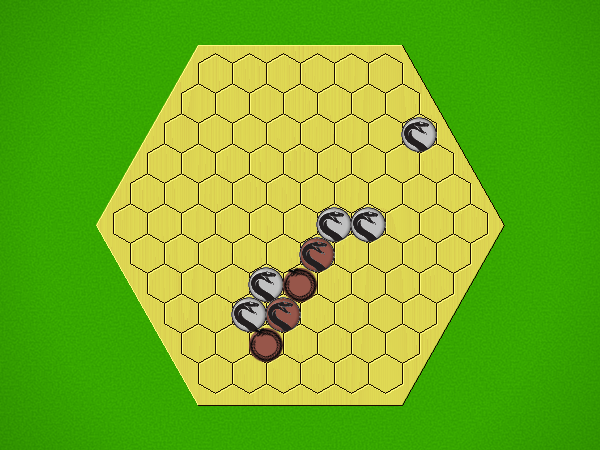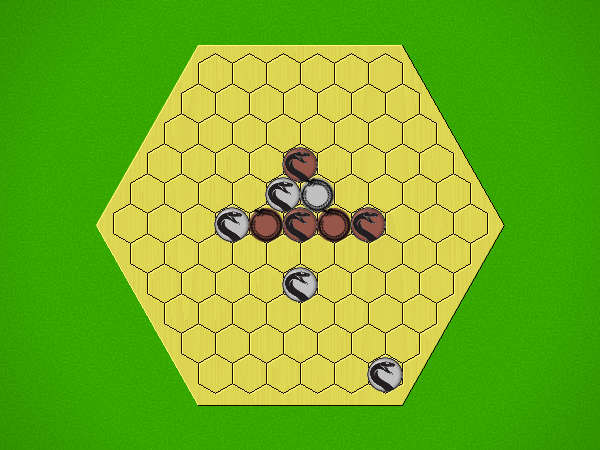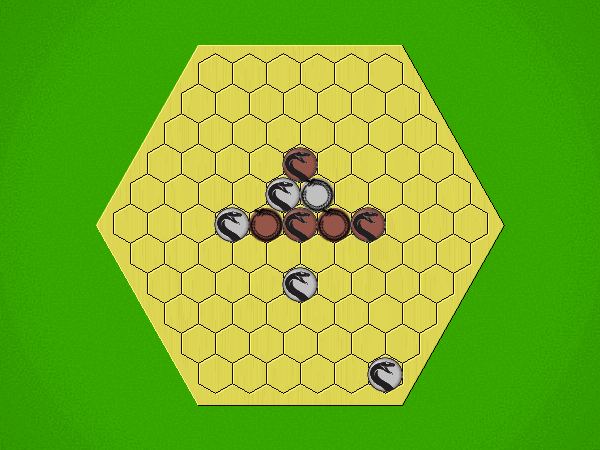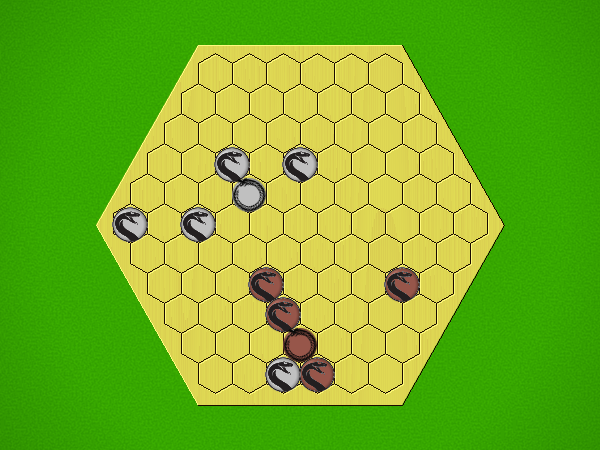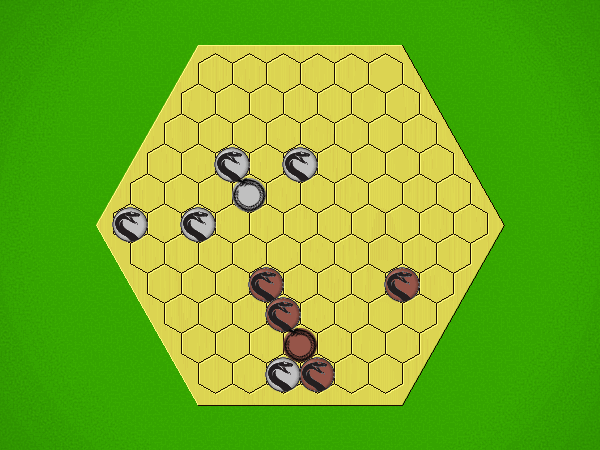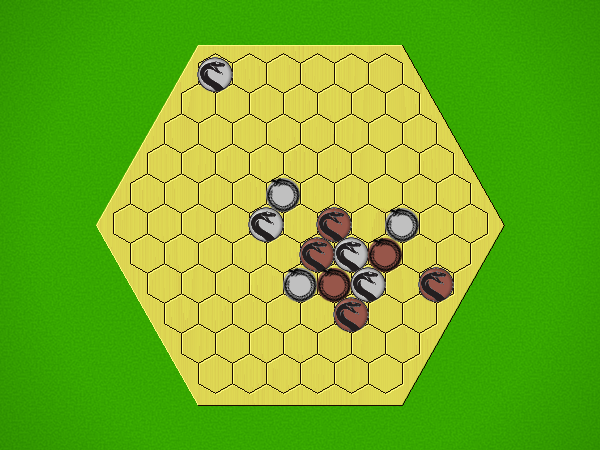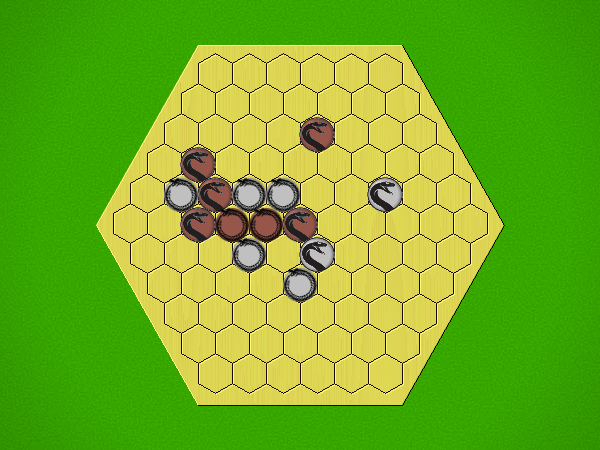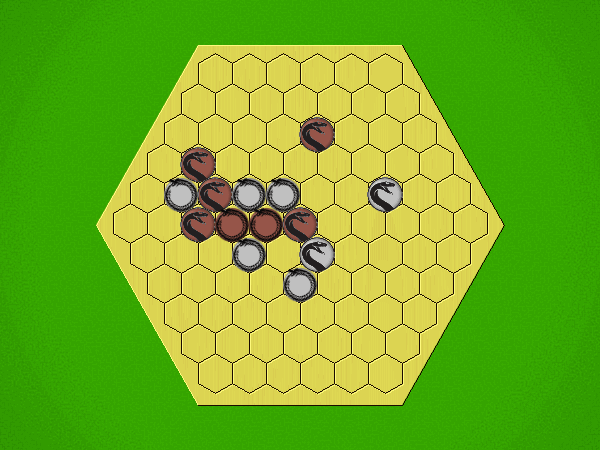Rules
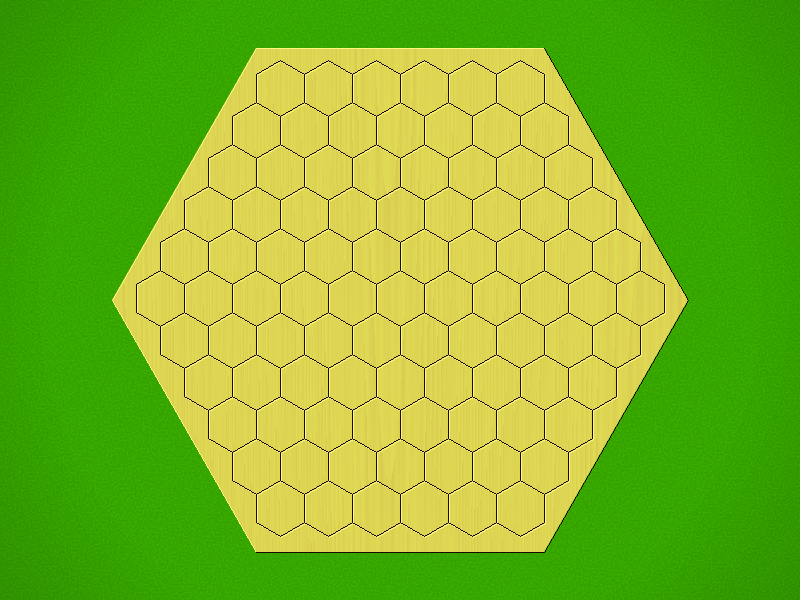
Representative game (in the sense of being of mean length). Wherever you see the 'representative game' referred to in later sections, this is it!
Equipment
- A size 6 HexHex board
- Enough Silver and Copper coins to cover the board (equal quantities of each)
Play
Each turn, starting with Silver, place a coin in an empty space with Heads showing; then flip all adjacent coins to their opposite sides.
Goal
If, at the end of your turn, you have:
- four of your pieces
- in a contiguous straight line
- showing the same side (all heads or all tails)
... then you win.
If the board is full and no one has won then the game is a draw.
Swap rule
To offset any first player advantage, play with the following swap rule:
- First turn: Player 1 places a Silver piece
- Second turn: Player 2 may play a Bronze piece or swap sides.
Simulations in Ai Ai suggest that the spaces 1 away from the edge are good swap candidates.
x x x x x x
x ? ? ? ? ? x
x ? s s s s ? x
x ? s s s s s ? x
x ? s s s s s s ? x
x ? s s s s s s s ? x
x ? s s s s s s ? x
x ? s s s s s ? x
x ? s s s s ? x
x ? ? ? ? ? x
x x x x x x
s=swap, x=don't swap, ?=balanced


